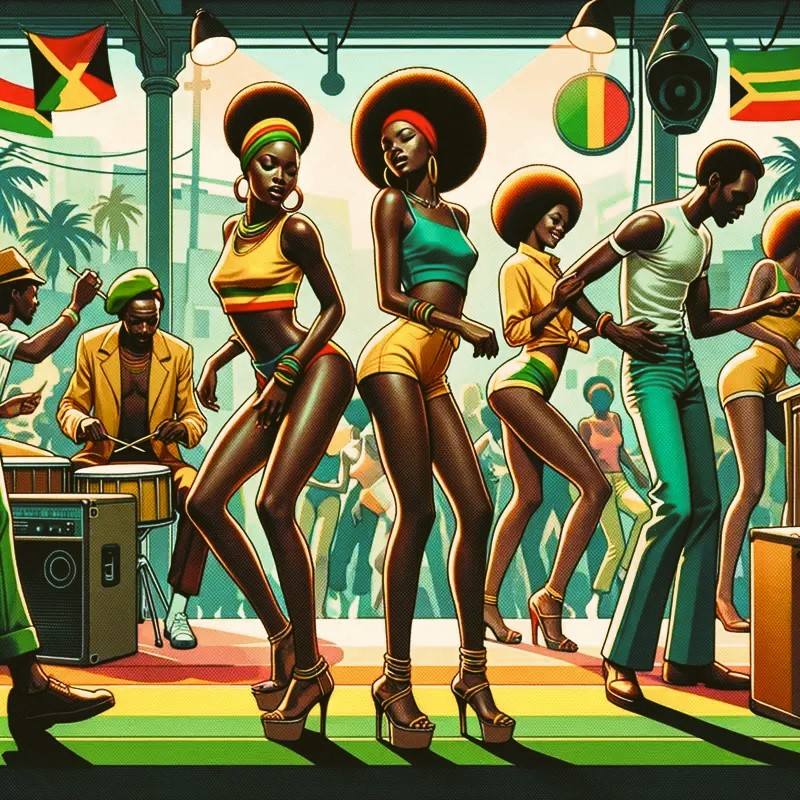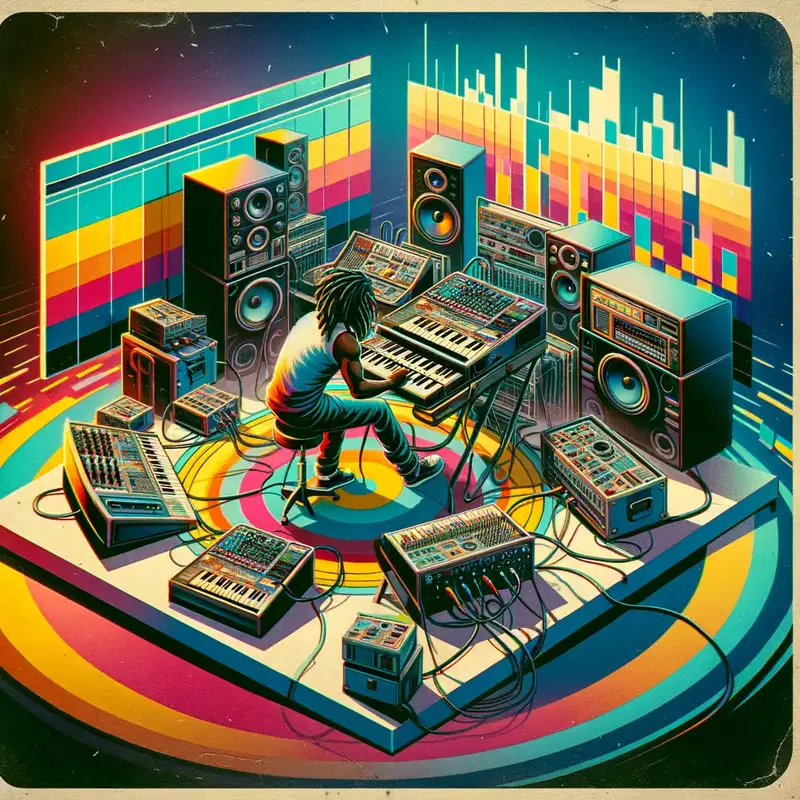Reggae
Reggae, a musical genre originating in Jamaica in the late 1960s, is much more than just music – it’s a reflection of culture, politics from which it emerged. Characterized by its distinctive rhythmic style and poignant messages, reggae has become a powerful force for change, unity, and identity.
Table of Contents
Subgenres
Roots Reggae: Focusing on spiritual themes, often with a socio-political message. Bob Marley, Peter Tosh, and Burning Spear are notable artists in this genre.
Dub: An instrumental subgenre, emphasizing drum and bass components, and making extensive use of sound effects and remixing.
Dancehall: Emerged in the late 1970s and early 1980s, with a focus on digital instruments and a heavier rhythm. Notable artists include Yellowman and Shabba Ranks.
Lovers Rock: A softer, more romantic form of reggae that originated in the UK.
Ragga: A blend of dancehall and hip-hop.
Oringins
Background: The Jamaican Soundscape
It’s vital to understand the rich tapestry of Jamaican music that set the stage:
- Mento: A Jamaican folk music style, mento used acoustic instruments like the banjo, hand drums, and the rumba box. It’s considered one of the direct predecessors to reggae.
- Ska: Emerging in the early 1960s, ska is characterized by its walking bass line, offbeat rhythms, and horn section. The tempo is upbeat and swift.
- Rocksteady: A bridge between ska and reggae, rocksteady slowed the ska tempo down and placed emphasis on the bass and rhythm guitar. Its reign was short but crucial to the birth of reggae.
Birth of Reggae
- Rhythmic Distinction: Reggae’s most distinguishing feature is its rhythm. It uses a regular, repetitive pattern called the “steppers” rhythm, with emphasis on the third beat of every measure. This provides a slower, laid-back feel compared to its predecessors.
- Rastafarian Influence: Reggae is deeply intertwined with Rastafarianism, a religious movement in Jamaica. The movement’s spiritual messages, emphasis on Pan-Africanism, and use of marijuana as a sacrament are reflected in the lyrics and themes of reggae music.
- The Sound System: Large, mobile street parties known as “sound systems” played a significant role in the spread of reggae. DJs would play records and toast (a precursor to rap) over the top of the music, often improvising lyrics.
Characteristics
- Rhythm: The hallmark of reggae is its rhythm, characterized by the ‘skank’ – a sharp rhythm played by the guitar or the piano on the offbeat.
- Bass: The bassline is prominent and played in a melodic style, often dominating the mix in reggae tracks.
- Lyrics: The themes are diverse, from social injustice and revolutionary sentiments to love, peace, and unity. Rastafarian beliefs often influence them.
- Instrumentation: Common instruments include drums, bass guitar, electric guitar, horns (like saxophone and trumpet), and keyboards.
Cultural and Social Impact
- Rastafarianism: Reggae and Rastafarianism are deeply intertwined. The spiritual messages of reggae often align with the teachings of Rastafarianism, emphasizing African pride, resistance against oppression, and the use of marijuana as a sacrament.
- Political Activism: Reggae has been a voice against colonialism, poverty, and social inequality. Songs like Bob Marley’s “Redemption Song” and “Get Up, Stand Up” exemplify reggae’s political nature.
- Global Influence: Reggae’s impact is worldwide. Beyond influencing many Western musicians, its beats and messages have been incorporated into music from Africa, Latin America, and other parts of Asia.
Notable Figures
- Bob Marley: Undoubtedly the most famous reggae artist, Marley’s music continues to inspire and influence artists globally.
- Lee “Scratch” Perry: A pivotal figure in the evolution of dub.
- Toots Hibbert: Frontman of Toots and the Maytals, credited with popularizing the term “reggae” with their hit “Do the Reggay.”
- Dennis Brown: Dubbed the “Crown Prince of Reggae,” he had a significant influence in the lovers rock subgenre.





